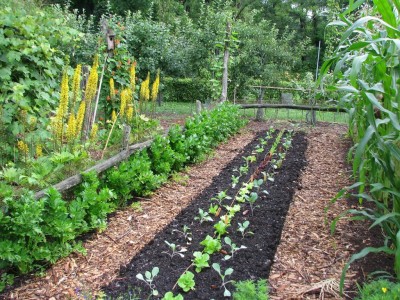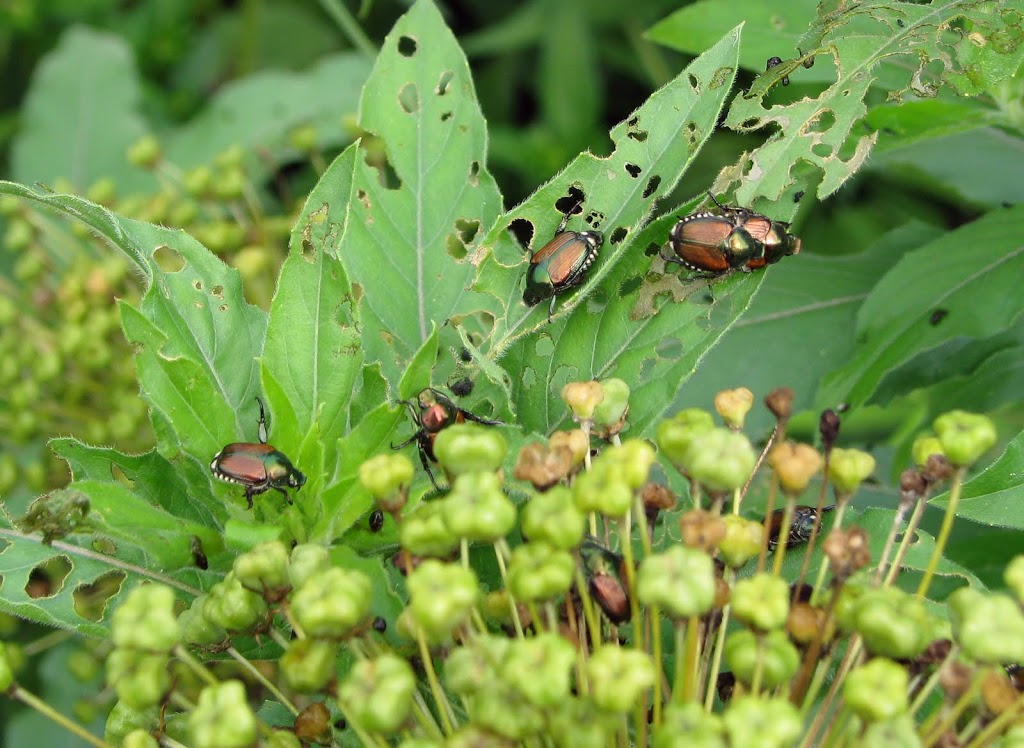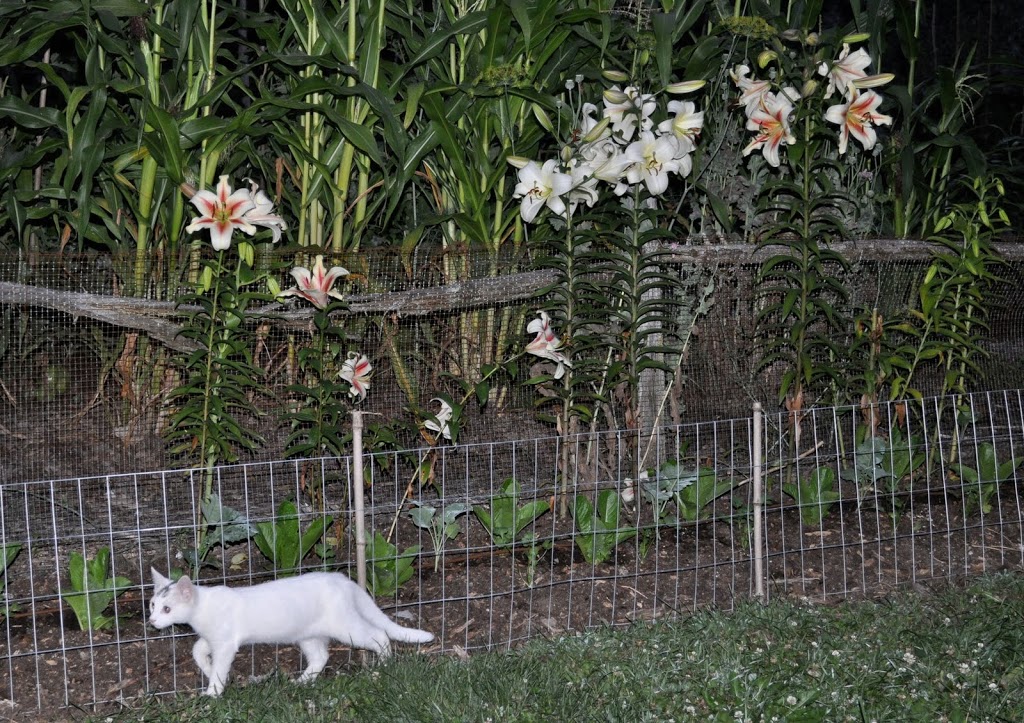Summertime and the livin’ is easy, fish are jumpin’ and the cotton is high . . . I don’t know about the fish in this hot weather, but, yes, the cotton is getting high. High for New York’s Hudson Valley, that is. My cotton is now about 10 inches high.
The yellowing, old pages of my Farmer’s Encyclopedia of Agriculture, published in 1914, states that cotton “is successfully cultivated in the United States as far north as Southern Virginia.” I’m banking on today’s hotter and longer summers for a cotton harvest this far north. Not that I’ve invested much in my crop; only 4 plants, started from seed sown in April and each now in its own 2 gallon pot.

Any cotton would be special grown around here but I’m growing the especially special variety ‘Earlene’s Green Cotton’ (from www.reimerseeds.com). With a 150 day maturity, the bolls — naturally olive-green! — should be ready for picking sometime in September. Neither the boll weevil, made famous in song and sculpture, nor any other major cotton pest should be a problem around here, so count my production in with the more than quarter of a million bales of organic cotton now being grown worldwide.
If yields are sufficient, I’ll perhaps try to process the harvest into a small handkerchief. At the very least, I’ll enjoy the pretty flowers, which look similar to okra and hibiscus, two of its relatives. And I’ll be carrying on an agricultural tradition that stretches back thousand of years with the growing of various species of cotton in Central and South America, Africa and the Arabian Peninsula, and India and Pakistan.
——————————————————–
The thermometer reads over a hundred degrees F. The forecast is for days of almost the same. It’s hard to believe the weather will ever cool off. But it will, and I’m planning on it. So much of gardening is not living in the moment!
The peas finally petered out. They’ve been cleared away and their bed sprinkled with soybean meal, mostly for nitrogen, and topped with an inch of fresh compost, for other nutrients and all sorts of other good things. In the relative cool of morning, tomorrow, I’ll plug into the ground broccoli transplants that I started from seed about a month ago. The plants should grow large through summer and then explode into giant, tight buds ready for harvest during cool weather that brings out the best flavor in this vegetable.

Planting also continues in other beds. I pulled up all the turnips, which, for the first time this year, I planted in spring. Turnip is another vegetable that thrives in cool weather but I figured it would be nice to have some in early summer also. We had plenty. They tasted awful. They are in the compost pile. Carrots, from seed, or kale, from transplants, will make better use of that space. I’ll put off planting turnips until the middle of August, which experience tells yield delectable roots in October.
Without any basis at all, I’m banking on warm weather now boding for warm weather into September. One more planting of bush beans, from seed, and cucumbers, from transplants sown early this month, will capitalize on that late summer warmth.
—————————————————-
Every garden year has its themes. Last year’s themes were late blight of tomatoes and rain, which — with cool weather, which we had — go hand in hand. This year’s themes are shaping up to be heat, drought, and squirrels.
There’s nothing to be done about the heat and drought except garden early morning and late afternoon, and water as needed.
As for the squirrels: Don’t they know they’re supposed to eat acorns and other nuts? They enjoyed many of my peas and almost all my gooseberries and cleared one old apple tree of green apples. Now they are working on the raspberries and eyeing the blueberries. Other gardeners have been similarly lamenting their losses to squirrels. In desperation, I may investigate a remedy that goes beyond the usual and obvious remedies of dogs, cats, traps, artillary, and chickenwire enclosures.
Rats, according to recent news reports, were keeping tourists from exploring the historic sewers of Vienna until someone came up with the idea of having bagpipe players accompany tour groups. The bagpipes, the sound of which keeps away the rats, might do the same for our “tree rats.” I am no fan of bagpipes but, as I said, I’m desperate.





Leave a Reply
Want to join the discussion?Feel free to contribute!